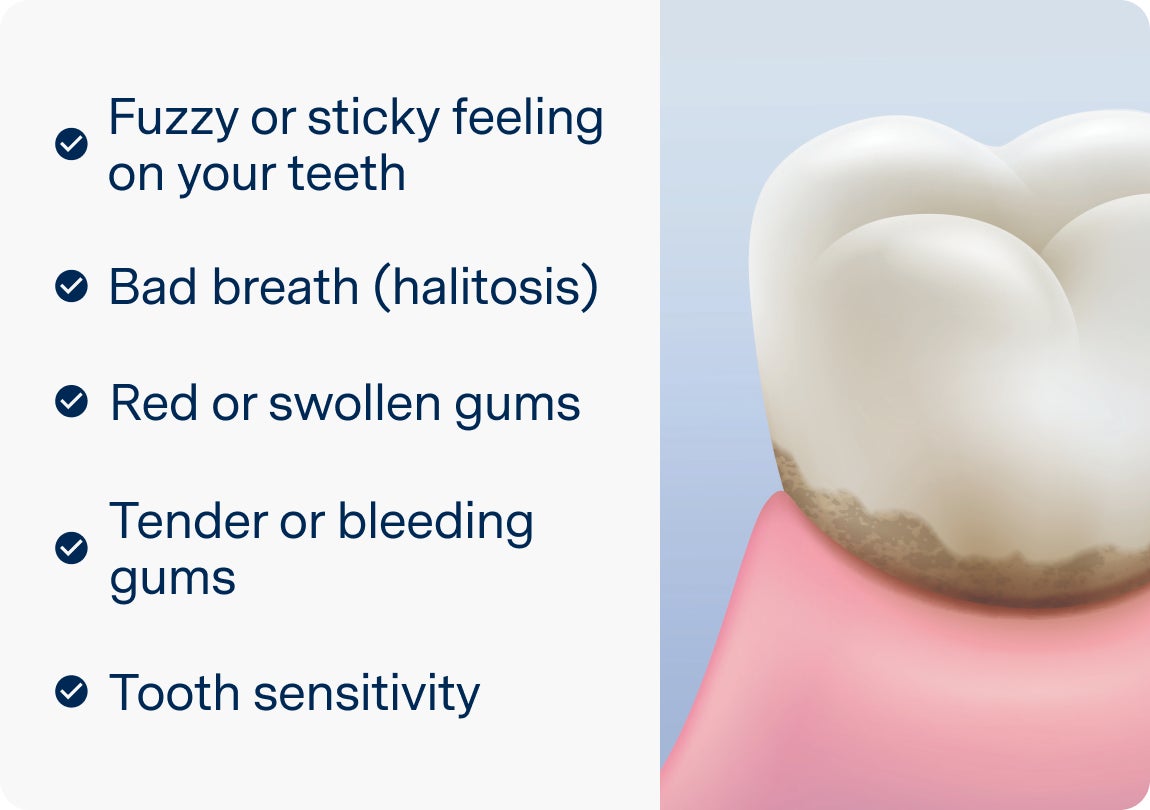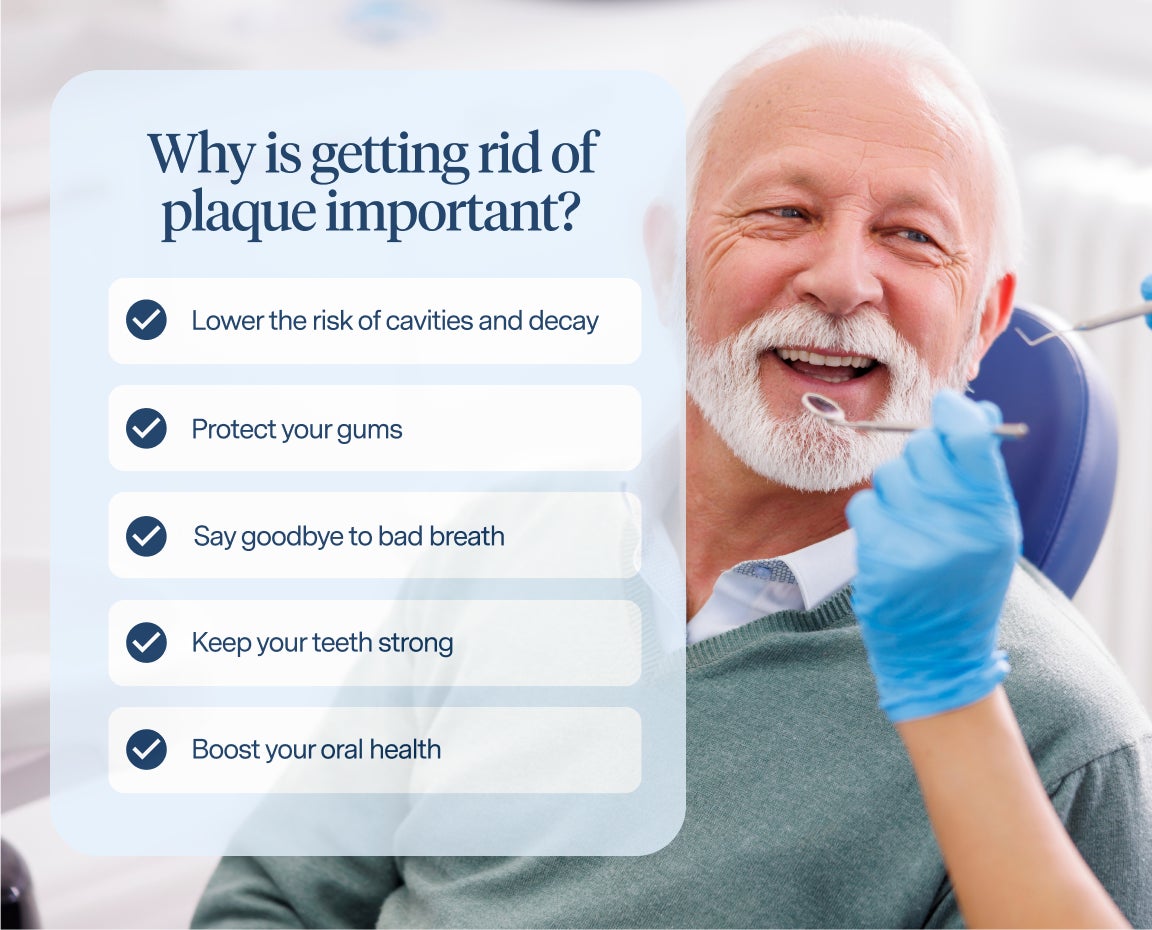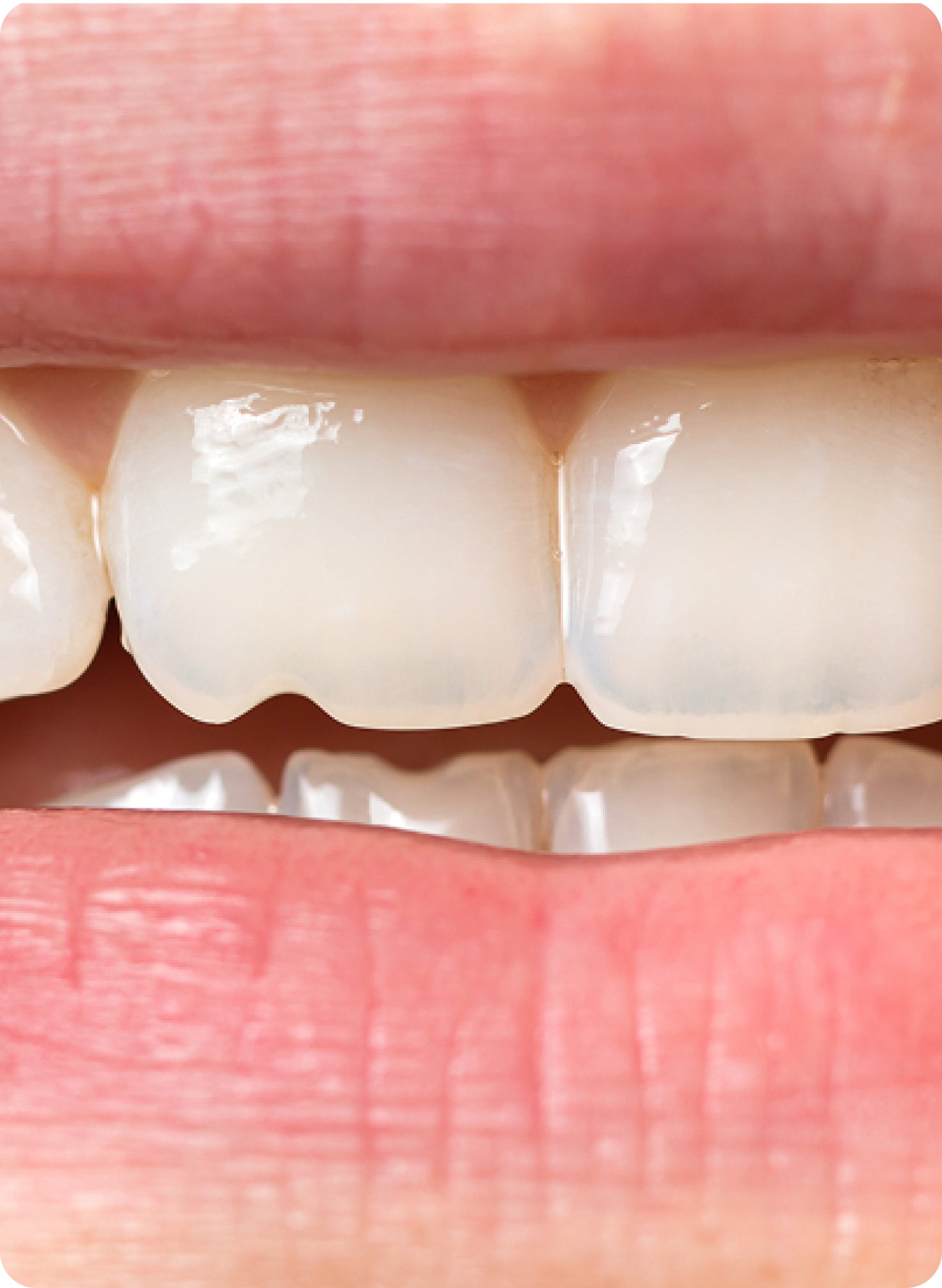Last updated 07.10.2025
Dental plaque: how it works and how to remove it
This article explains what dental plaque is and how to remove it with daily care and professional cleanings.

Ever felt a weird, sticky film on your teeth after enjoying something sweet or at the end of a busy day? That’s probably plaque. Plaque builds up on your teeth and gums over time when it’s not brushed away regularly. If it’s not taken care of daily, it can lead to bigger dental issues down the road.
But what is plaque anyway? How do you spot it? Let’s find answers to these questions and give tips on the best ways to remove it so you can keep your smile looking bright and healthy.
Think you might have some plaque buildup that needs some professional attention? We’re just one click away. Schedule an appointment at your local Aspen Dental office for a dental cleaning.

What is dental plaque?
Dental plaque is that soft, sticky film that forms on your teeth. It’s made up of food particles, debris and bacteria. If it’s not taken care of, it can cause problems like cavities and gum disease.
Plaque forms when bacteria in your mouth mix with saliva and food particles. The bacteria love to feed on sugars and starches, leaving behind a filmy residue and creating acids that can damage the hard outer layer of your teeth.
Brushing at least twice a day and keeping up with good oral hygiene can help get rid of plaque before it becomes an issue. But if you skip your brushing routine, plaque can harden into tartar, which can only be removed by your dentist during a professional teeth cleaning.
Symptoms of plaque buildup

Plaque can sneak up on you over time, but catching it early is key. If you notice any of these signs, it’s a good idea to visit your Aspen Dental care team to take care of plaque before it leads to bigger oral health problems, such as:
Fuzzy or sticky feeling on your teeth: If your teeth feel gritty, slimy or less smooth than usual, it could be a sign of plaque.
Bad breath (halitosis): Plaque bacteria can build up and lead to chronic bad breath that mints just won’t fix.
Red or swollen gums: Gums that look irritated could mean plaque is present on your teeth or between them.
Tender or bleeding gums: If your gums feel sore or bleed while flossing, it’s often a sign of inflammation caused by plaque.
Tooth sensitivity: Plaque buildup can wear down your enamel, making your teeth more sensitive to hot, cold or sweet foods.
How to get rid of plaque on teeth
Keeping your teeth clean and healthy doesn’t have to be complicated. Practicing good oral hygiene is the key to staying ahead of plaque buildup and tackling it as it forms. Follow these simple tips to maintain a healthy smile:
Brushing
Brush your teeth twice a day, especially after meals, to get rid of food particles, bacteria and plaque before it has a chance to stick around. Use a toothbrush with soft bristles or an electric toothbrush (whatever your dentist recommends) and don’t forget to replace your toothbrush or brush head regularly to keep things clean and fresh.
Try brushing with fluoride toothpaste to strengthen your teeth and prevent decay. And while you’re at it, give your tongue a gentle brush or use a tongue scraper to clear away bacteria and that filmy coating for fresh breath.
Flossing
Floss daily to clean out food and plaque from those tricky spots between your teeth and along your gumline. Don’t skip this vital step!
Mouthwash
Rinse with an antimicrobial mouthwash to fight bacteria and germs that cause plaque.
Regular dental check-ups
Don’t skip those regular dentist appointments. Visiting your dentist twice a year for professional cleanings (or whatever your care team recommends) helps keep plaque and tartar (hardened plaque) under control. Plus, your dentist or hygienist can give your teeth a thorough cleaning, especially in those hard-to-reach areas that brushing and flossing can’t cover.

Why is getting rid of plaque important?
Getting rid of plaque is key to keeping your smile healthy and bright. Here’s why it matters:
Lower the risk of cavities and decay: Plaque produces acid that can wear down your tooth enamel, leading to cavities. If left untreated, this can cause pain and even tooth loss—something we all want to avoid.
Protect your gums: Plaque that isn’t addressed can irritate your gums, causing redness, swelling and inflammation. Over time, this can lead to gum disease like gingivitis or periodontitis, but you can prevent it by brushing away plaque daily.
Say goodbye to bad breath: Plaque and bacteria can trap food particles, resulting in bad breath. Removing plaque keeps your breath fresher and your confidence higher.
Keep your teeth strong: If plaque isn’t removed, it hardens into tartar, which can lead to more serious issues and requires professional cleaning to get rid of.
Boost your oral health: Plaque can cause long-term problems, like tooth damage or loss, if not managed. Brushing, flossing and regular dental check-ups help you maintain a healthy smile you can feel great about.

How to reduce dental plaque
Want to keep plaque at bay? It’s all about a solid daily routine. Here are some easy steps to follow:
Brush your teeth twice a day (and after those sweet treats when you can).
Make flossing a once-a-day habit.
Rinse with an antimicrobial mouthwash.
Stop by Aspen Dental for a professional cleaning twice a year.
Stick to a balanced diet and try to go easy on the sugary snacks.

Removing dental plaque FAQs
What does dental plaque look like?
Plaque is usually a colorless film, but when it starts to build up, it can look white or yellowish. You’ll probably notice it as a fuzzy feeling on your teeth before you actually see it.
What happens if plaque isn’t removed?
If plaque sticks around too long, it can harden into tartar, which needs to be removed by a dentist. Plaque and tartar can lead to cavities, gum disease and other oral health problems.
How often should I see my dentist to get plaque removed?
Visiting your dentist every six months for a dental cleaning and check-up is essential to your oral health. During your visit, your care team will clean off any plaque buildup and check your teeth for any issues, like cavities or gum disease.
Can I remove plaque at home?
You can stay on top of plaque at home by brushing twice a day and flossing once a day. Using mouthwash can also help get rid of bacteria and plaque while freshening your breath.
Learn more about good oral health habits
Plaque buildup can feel gross and lead to bigger problems like cavities and gum disease over time. With a solid oral care routine, you can keep your teeth healthy and bright.
Ready for a cleaner, brighter smile? Schedule an appointment with your Aspen Dental care team today for a professional dental cleaning to make sure your teeth are plaque and tartar-free.



